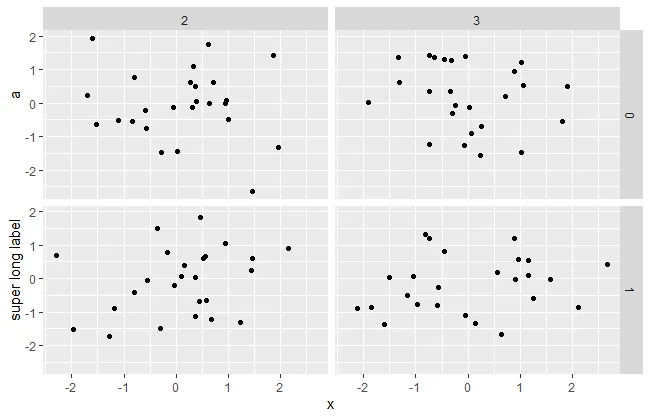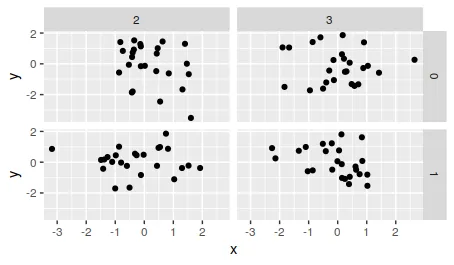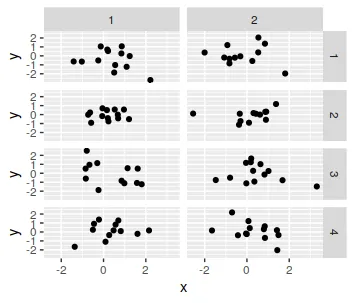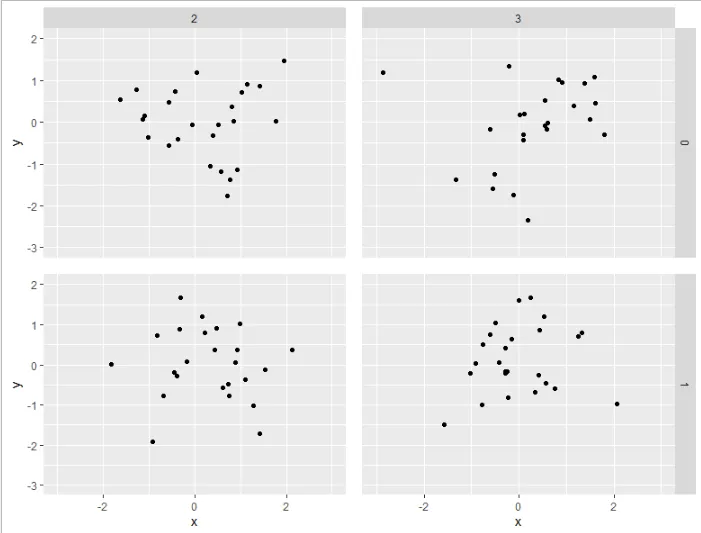这里有一个版本,使用ggplot2进行注释。它应该是可扩展的。
不需要处理grobs。缺点是x轴定位和图形边距需要半手动定义,这可能不太稳健。
library(ggplot2)
df <- data.frame(x= rnorm(100), y= rnorm(100),
group1= rep(0:1, 50), group2= rep(2:3, each= 50))
annotate_ylab <- function(df, x, y, group1, group2, label = "label") {
df[[group2]] <- factor(df[[group2]])
lab_df <- data.frame(
x = min(df[[x]]) - 0.2 * diff(range(df[[x]])),
y = mean(df[[y]]),
g1 = unique(df[[group1]]),
g2 = levels(df[[group2]])[1],
label = label
)
names(lab_df) <- c(x, y, group1, group2, "label")
lab_df
}
y_df <- annotate_ylab(df, "x", "y", "group1", "group2", "y")
ggplot(df, aes(x, y)) +
geom_point() +
geom_text(data = y_df, aes(x, y, label = label), angle = 90) +
facet_grid(group1 ~ group2) +
coord_cartesian(xlim = range(df$x), clip = "off") +
theme(axis.title.y = element_blank(),
plot.margin = margin(5, 5, 5, 20))

y_df_mtcars <- annotate_ylab(mtcars, "mpg", "disp", "carb", "vs", "y")
ggplot(mtcars, aes(mpg, disp)) +
geom_point() +
geom_text(data = y_df_mtcars, aes(mpg, disp, label = label), angle = 90) +
facet_grid(carb ~ vs) +
coord_cartesian(xlim = range(mtcars$mpg), clip = "off") +
theme(axis.title.y = element_blank(),
plot.margin = margin(5, 5, 5, 20))

由reprex package (v2.0.1)于2021年11月24日创建







